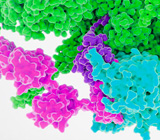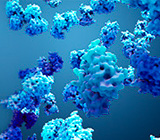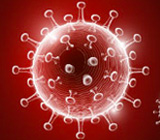-
REAGENT SERVICES
Hot!
-
Most Popular Services
-
Molecular Biology
-
Recombinant Antibody/Protein
-
Reagent Antibody
-
CRISPR Gene Editing
-
DNA Mutant Library
-
IVT RNA and LNP Formulations
-
Oligo Synthesis
-
Peptides
-
Cell Engineering
-
- CRISPR/Cas9 sgRNA
- CRISPR/Cas12a crRNA
- Prime Editing Guide RNA
- Base Editing Guide RNA
- HDR Templates
- gRNA + HDR Template Design Tools
- cGMP Guide RNA
- cGMP HDR Templates
- CRISPR/Cas Proteins
- CAR-T Knock-in Optimization Kit
- CRISPR Plasmids
- CRISPR gRNA Plasmid Libraries
- CRISPR Cell Lines
- Microbial Genome Editing
-
-
PRODUCTS
-
Most Popular Reagents
-
 Instruments
Instruments
-
Antibodies
-
ELISA Kits
-
Protein Electrophoresis and Blotting
-
Protein and Antibody Purification
-
Recombinant Proteins
-
Molecular Biology
-
Stable Cell Lines
-
Cell Isolation and Activation
-
 IVD Raw Materials
IVD Raw Materials
-
 Therapy Applications
Therapy Applications
-
Resources
-
- Pharmacokinetics and Immunogenecity ELISA Kits
- Viral Titration QC ELISA Kits
- -- Lentivirus Titer p24 ELISA KitHot!
- -- MuLV Titer p30 ELISA KitNew!
- -- AAV2 and AAVX Titer Capsid ELISA Kits
- Impurity Test ELISA Kits
- -- BSA ELISA Kit, 2G
- -- Cas9 ELISA KitNew!
- -- Protein A ELISA KitNew!
- -- His tagged protein detection & purification
- -- dsRNA ELISA Kit
- -- Endonuclease ELISA Kit
- COVID-19 Detection cPass™ Technology Kits
-
- Automated Maxi-Plasmid PurificationHot!
- Automated Mini-Plasmid PurificationNew!
- PCR Reagents
- S.marcescens Nuclease Benz-Neburase™
- DNA Assembly GenBuilder™
- Cas9 / Cas12a / Cas13a Nucleases
- Base and Prime Editing Nucleases
- GMP Cas9 Nucleases
- CRISPR sgRNA Synthesis
- HDR Knock-in Template
- CRISPR Gene Editing Kits and Antibodies
-
![AmMag™ Quatro Automated Plasmid Purification]() AmMag™ Quatro automated plasmid purification
AmMag™ Quatro automated plasmid purification
-
![Anti-Camelid VHH]() MonoRab™ Anti-VHH Antibodies
MonoRab™ Anti-VHH Antibodies
-
![ELISA Kits]() ELISA Kits
ELISA Kits
-
![Precast Gels]() SurePAGE™ Precast Gels
SurePAGE™ Precast Gels
-
![Quatro ProAb Automated Protein and Antibody Purification System]() AmMag™ Quatro ProAb Automated Protein and Antibody Purification System
AmMag™ Quatro ProAb Automated Protein and Antibody Purification System
-
![Target Proteins]() Target Proteins
Target Proteins
-
![AmMag™ Quatro Automated Plasmid Purification]() AmMag™ Quatro automated plasmid purification
AmMag™ Quatro automated plasmid purification
-
![Stable Cell Lines]() Stable Cell Lines
Stable Cell Lines
-
![Cell Isolation and Activation]() Cell Isolation and Activation
Cell Isolation and Activation
-
 IVD Raw Materials
IVD Raw Materials
-
![Quick
Order]() Quick Order
Quick Order
-
![Quick
Order]() Quick Order
Quick Order
- APPLICATIONS
- RESOURCES
- ABOUT US
- SIGN IN My Account SIGN OUT
- REGISTER

![Amino Acid Code Amino Acid Code]()
Biology Terms Dictionary
This Biology terms dictionary provides query services for biology and biochemistry terms. Please enter the biology or biochemistry terms you want to search.
List by Alphabet: A B C D E F G H I J K L M N O P Q R S T U V W X Y Z
Mammalian Protein Expression
Introduction
Mammalian protein expression refers to the use of mammalian cells to produce recombinant proteins for research, diagnostic, and therapeutic applications. This system is widely employed due to its ability to generate complex proteins with post-translational modifications (PTMs), such as glycosylation, phosphorylation, and disulfide bond formation, which are often essential for protein function and therapeutic efficacy. Compared to bacterial or yeast expression systems, mammalian systems produce biologically relevant proteins that closely resemble their native counterparts, making them indispensable for biopharmaceutical applications.
Overview of the Mammalian Protein Expression Process
The production of proteins in mammalian systems involves several critical steps, from gene design to protein purification and quality control. The following sections provide a stepwise outline of this process.
1. Gene Cloning and Vector Design
• The gene encoding the target protein is cloned into a suitable expression vector, optimized for high transcription and translation efficiency.
• Promoters such as CMV (cytomegalovirus) are commonly used to drive high expression levels and enhance protein production.
• Codon optimization ensures that the gene sequence aligns with the host cell’s tRNA availability, improving translation efficiency.
2. Cell Line Selection
Mammalian cell lines are chosen based on the desired protein type, scalability, and required PTMs:
• CHO (Chinese Hamster Ovary) cells: Considered the gold standard for industrial-scale production of therapeutic proteins due to their scalability and efficient glycosylation.
• HEK293 cells: Often used for transient expression of recombinant proteins for research purposes and viral vector production.
• NS0 and SP2/0 cells: Frequently employed for monoclonal antibody production.
3. Transfection Strategies
Mammalian protein expression can be achieved through transient transfection or stable transfection:
• Transient Transfection:
◦ DNA is introduced temporarily into the cells, resulting in rapid but short-term protein production.
◦ Commonly used in early-stage research, high-throughput screening assays, and small-scale protein production.
◦ HEK293 cells are favored due to their high transfection efficiency.
• Stable Transfection:
◦ The target gene integrates into the host genome, allowing continuous protein expression.
◦ This approach is essential for large-scale manufacturing of therapeutic proteins such as monoclonal antibodies.
◦ CHO cells are the preferred system for stable transfection due to their robustness and adaptability to industrial bioreactors.
4. Upstream Processing
This stage involves the preparation and maintenance of mammalian cells in optimized growth conditions to maximize protein yield. Key aspects include:
• Culture Media: Specialized media containing essential nutrients and growth factors, often including serum-free options for CHO cells.
• Bioreactor Systems: Use of stirred-tank or wave bioreactors for large-scale production, maintaining tight control over pH, oxygen, and nutrient levels.
Scalability: Cells can be cultured in suspension, making them suitable for industrial-scale production.
5. Downstream Processing
After protein expression, downstream processing ensures purification and quality control:
• Protein Purification: Techniques such as affinity chromatography (e.g., Protein A for antibodies) and size-exclusion chromatography are employed to isolate and purify the target protein.
• Quality Control: Analytical methods such as SDS-PAGE, HPLC, and mass spectrometry assess the purity, concentration, and structural integrity of the expressed proteins.
• Glycosylation Analysis: Ensures that the PTMs are appropriate and consistent for therapeutic applications.
Advantages of Mammalian Protein Expression
• Biologically Relevant PTMs: Mammalian cells perform glycosylation, phosphorylation, and folding similar to those in native human systems, ensuring that the expressed proteins are biologically active.
• Therapeutic Protein Production: Proteins produced in mammalian systems are suitable for direct use in patients, including monoclonal antibodies and enzyme replacement therapies.
• Flexibility in Protein Types: Mammalian cells can express secreted proteins, membrane proteins, and viral vectors, which are challenging to produce in simpler systems like bacteria.
• Regulatory Compliance: Many FDA-approved biologics are manufactured using mammalian systems, ensuring alignment with regulatory standards.
Industrial Applications
1. Monoclonal Antibodies Production
CHO cells are the industry standard for producing monoclonal antibodies, which are widely used in cancer immunotherapy, autoimmune disease treatment, and infectious disease management.
2. Recombinant Therapeutic Proteins
Proteins such as erythropoietin (EPO), interferons, and clotting factors are produced using mammalian cells to ensure correct folding and PTMs.
3. Viral Vectors for Gene Therapy
Mammalian cells, particularly HEK293, are used to produce viral vectors like adenoviruses and lentiviruses for delivering therapeutic genes in gene therapy applications.
4. Vaccine Production
Mammalian systems support the production of complex vaccines, including influenza and COVID-19 vaccines, as well as virus-like particles (VLPs) for next-generation vaccines.
GenScript Services and Solutions
GenScript provides comprehensive support for mammalian protein expression, including:
• Stable Cell Line Development: Custom development of CHO and HEK293 stable cell lines to support the production of therapeutic proteins and antibodies.
• Transient Protein Expression Services: Rapid protein production using transient transfection systems for early-stage research and development.
• Gene Synthesis and Codon Optimization: Tailored gene synthesis services to improve protein expression efficiency in mammalian cells.
These solutions enable researchers and pharmaceutical companies to accelerate the development of biologics and ensure high-quality protein production.
Challenges and Future Directions
• High Production Costs: Mammalian cell culture requires complex growth media and specialized equipment, making it expensive compared to microbial systems.
• Long Development Time: Establishing stable cell lines can take several months, delaying time-to-market for therapeutics.
• Yield Optimization: Achieving high protein yields requires careful optimization of both upstream and downstream processes.
Future Directions
• Synthetic Biology and Genome Editing: Techniques such as CRISPR can enhance cell line performance and streamline production.
• Continuous Bioprocessing: Emerging technologies allow seamless protein production, improving efficiency and reducing costs.
• High-Throughput Screening: Automation and high-throughput systems can accelerate clone selection and process optimization.
Conclusion
Mammalian protein expression systems are essential for the production of biologically active proteins with complex post-translational modifications, making them particularly valuable for therapeutic applications. These systems play a crucial role in the production of monoclonal antibodies, viral vectors, and vaccines. With continuous advancements in biotechnology, such as genome editing and synthetic biology, mammalian protein expression will remain a key platform in pharmaceutical and biotechnological innovation. For those interested in gaining in-depth knowledge and practical skills in this field, the Protein & Antibody Academy offers cutting-edge information and training related to protein expression.
- Tags:
- Protein
Related Biology Tools
-
GenSmart™ Codon Optimization
GenSmart Optimization is a free online tool for performing codon optimization to improve gene expression. GenScript's patented algorithms are integrated into the tool to optimize the computing capability of high-performance sequence generation.
-
DNA Construct Design Tool
GenSmart™ Design is a free online DNA construct design tool developed by GenScript. GenSmart™ Design has two design modules, the Create Construct module for individual plasmid design and the Create Library module for DNA library design.
-
Codon Frequency Tables
This online tool shows commonly used genetic codon frequency table in expression host organisms including Escherichia coli and other common host organisms.
Service and Products

Protein Expression
GenScript recombinant protein and rAb services provide high quality recombinant proteins and rAbs for a variety of downstream research applications.

Bacterial Expression
One-stop service from Sequence to Protein starting from $1600, 4 weeks.

Insect Expression
GenScript's BacuVance baculovirus expression system was developed by our in-house team of scientists for virus production and expression of recombinant proteins from baculovirus-infected insect cells.

Mammalian Transient Expression
Proprietary High Density (HD) expression system, enhance the protein yield up to 100 fold, achieve antibody titers up to 3 g/L.

Reagents for COVID-19 Research
Gram level, ready to ship RBD proteins, ACE2 assay cell lines and pseudovirus.
-
Top Search
-
Hot Glossary
-
Antibody
If you know of any terms that have been omitted from this glossary that you feel would be useful to include, please send detail to the Editorial Office at GenScript: website@genscript.com
If your term is adopted, we will send 1,000 EzCoupon points to your GenScript account.
-





































